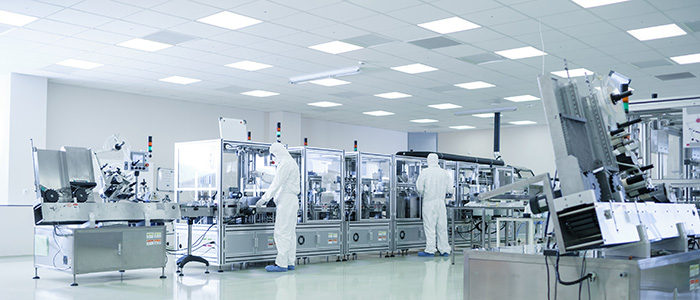
Microelectronics technology is increasingly prevalent, especially within the human body, as medical researchers develop new approaches to monitoring and treating a growing array of illnesses and injuries. A variety of implantable medical devices are now used routinely, ranging from intraocular lenses to electroencephalography (EEG) recorders and many others.
Cleanliness is of critical importance in microelectronic manufacturing, precisely because any present contamination can have serious health consequences for patient safety. Industry analysis reports over 50% of defective devices can be attributed to micro-contamination.
In an April 2020 article by Cleanroom Technology, it was noted that cellulose-based steam sterilization materials, rather than preventing contamination, contributed to increased particulates in an aseptic manufacturing environment. Many commonly used wiping materials also contain cellulose and present a contamination risk.
A common wiper choice for cleanroom general environmental cleaning is a hydro-entangled blend of 55% cellulose / 45% polyester, a material composition which is very similar to paper towels. This is a good general use light task wiper (low cost, absorbent, soft, relatively clean); unfortunately, when it is chosen for more critical tasks and rooms where microelectronics are in-use, the results can be negative as defects are increased. Yet, this is common practice and users are confused by finding cellulosic contamination on product, or elsewhere in the environment.
The mechanism for contamination results from using the wipers wet. When cellulose gets wet it breaks down and has reduced wet strength. This causes fibers to shed do to abrasion as the wiper is passed across surfaces in the cleaning process. The use of a more durable material can avoid the shedding of fibers as surfaces are wiped.
This contamination can go unnoticed and unresolved for months before the impacts of this cross-contamination is realized and resolved. This can result in a very high cost of use, from both a product quality and patient safety perspective.
Biotechnology and Medical Device Manufacturing Cleanrooms should use cellulose-free wiper options, such as 100% pure polyester knits, or woven microfibers to eliminate the risks posed by cellulose in the cleanroom. Teknipure’s high-quality microfibers are a cellulose-free material, manufactured with a proprietary fiber splitting process, resulting in superior cleaning with no fiber loss. This substrate provides excellent durability, improved cleaning results and high absorbency. These wipers are available laundered, pre-saturated, and sterile.
Don’t put your highly-sensitive bioelectronic production and yield, or patient safety, at risk. Take a measure of the wiper (and swab!) products being used in your critical environment. Consider using cellulose-free wiper options to ensure that your manufacturing applications and processes are as free from all sources of micro-contamination as possible.